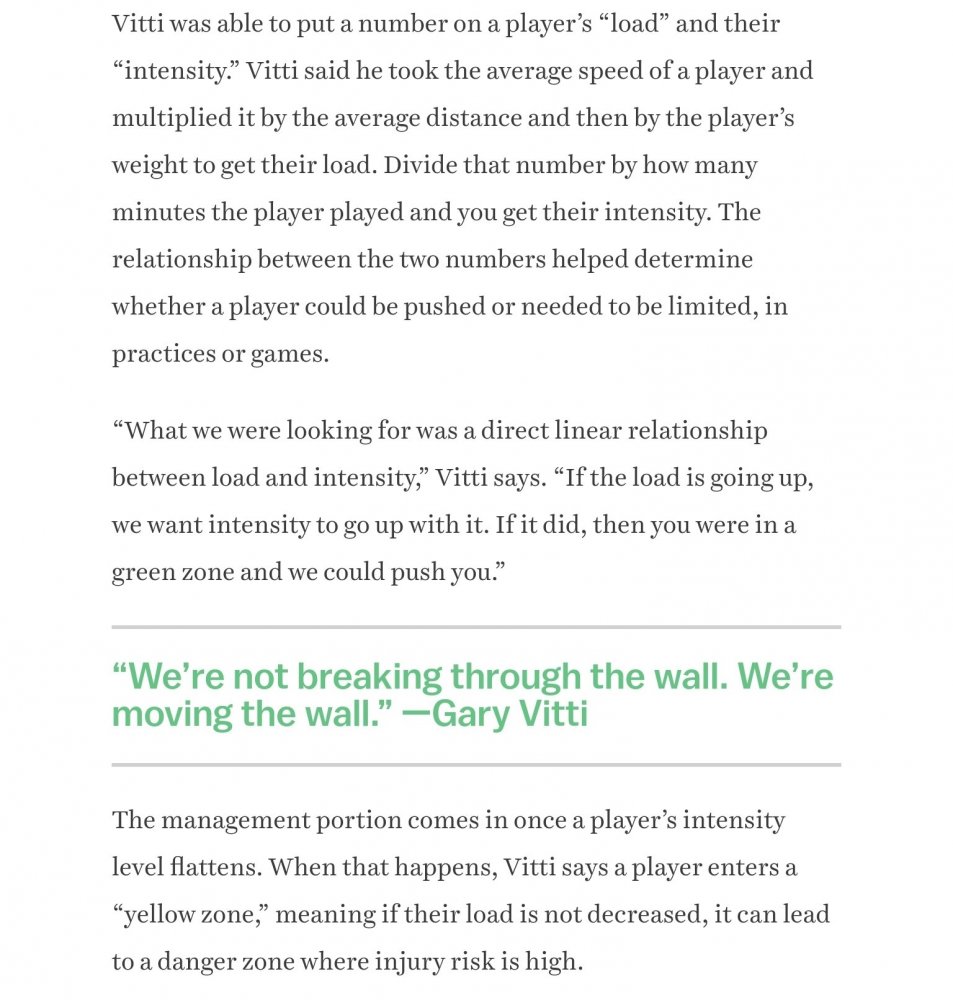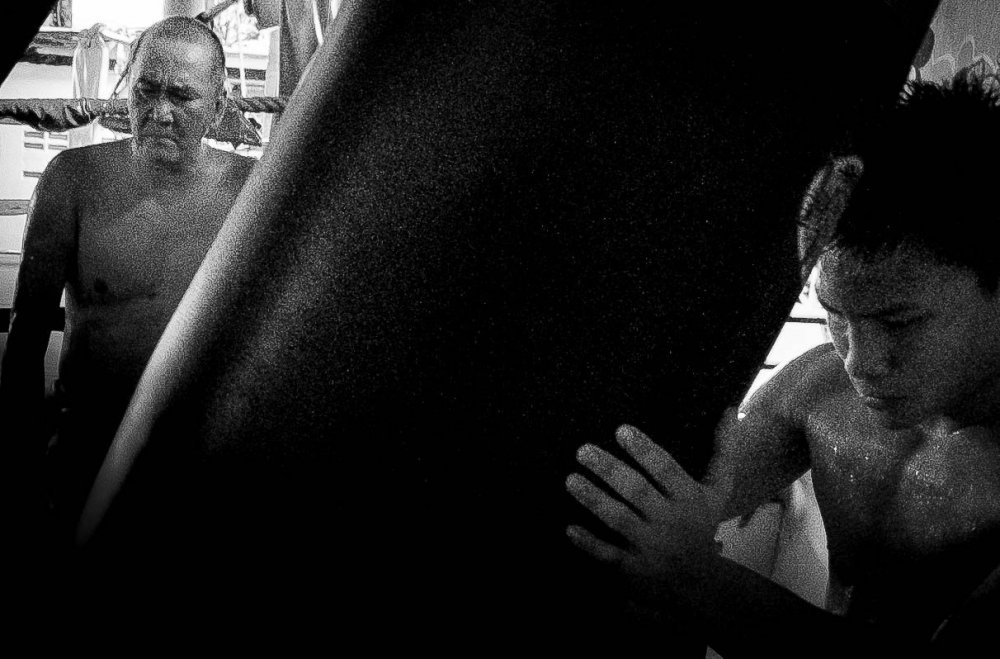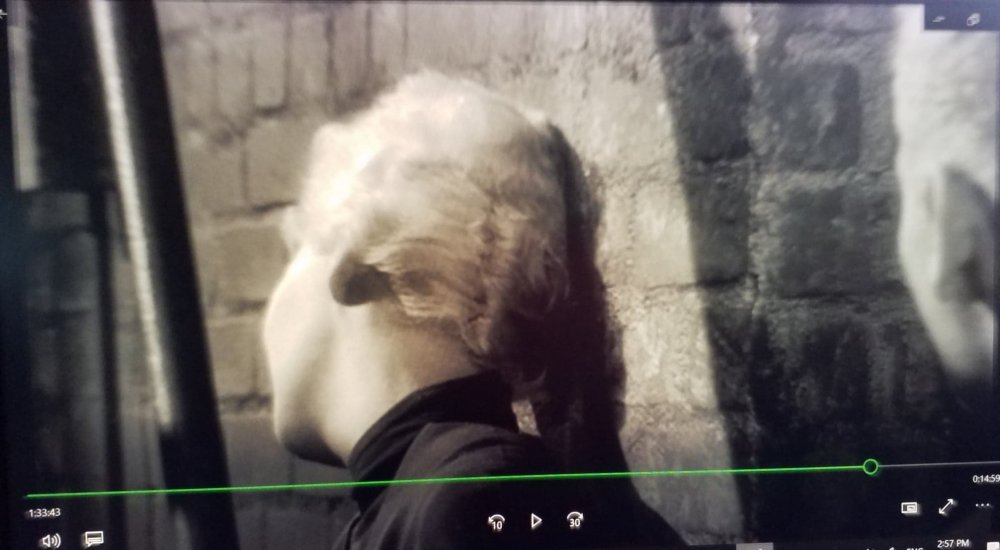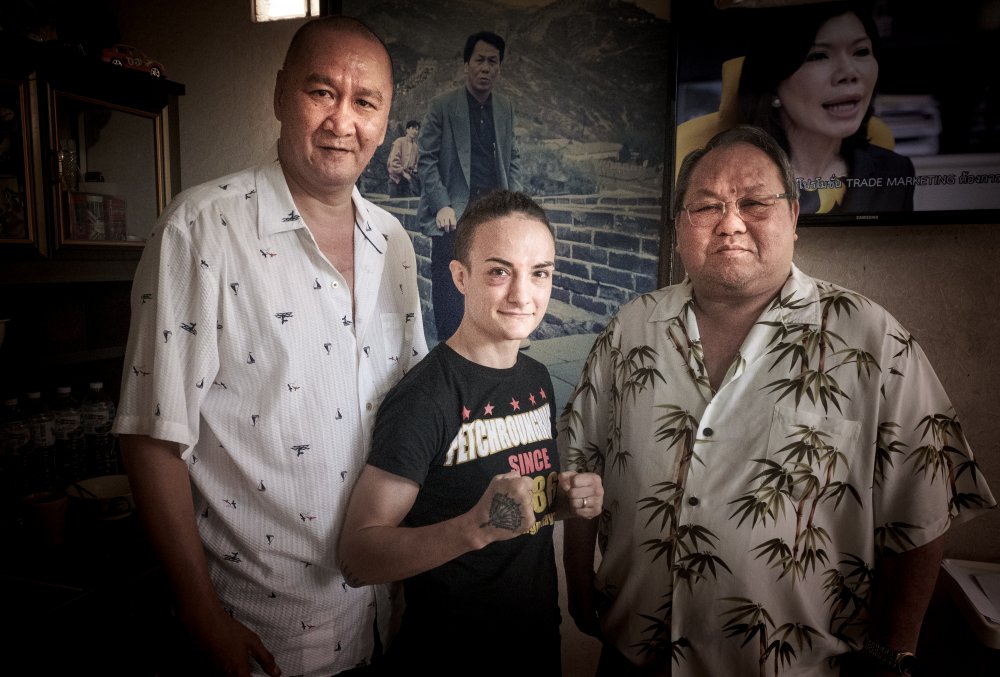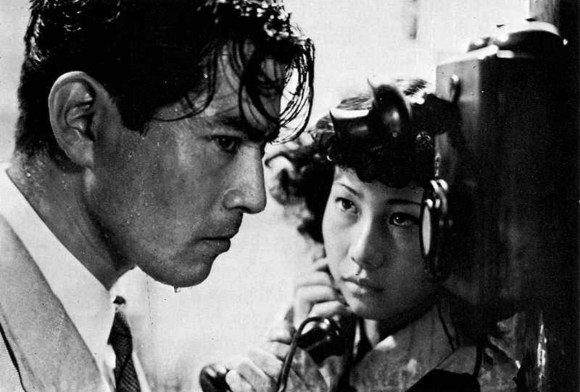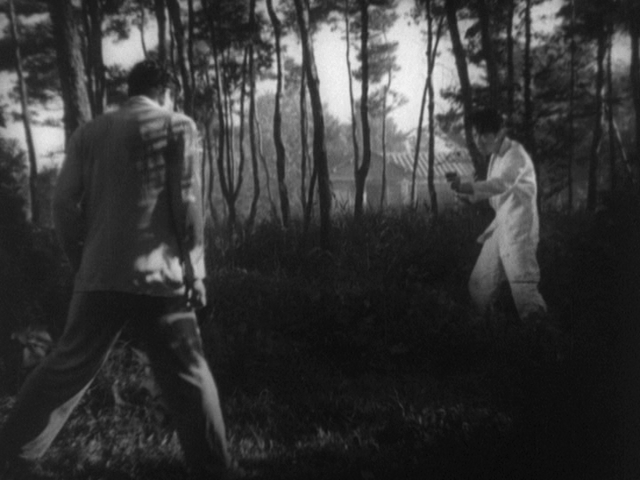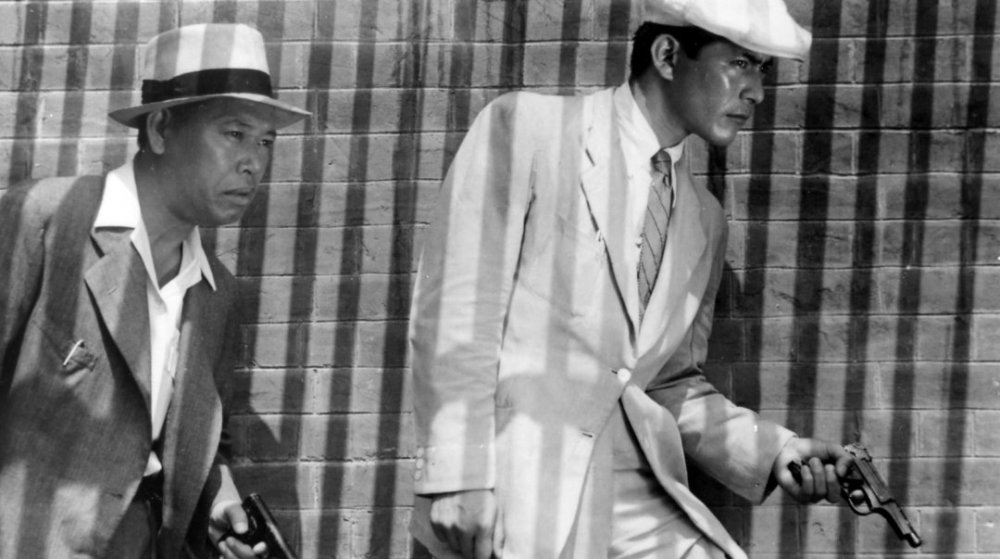-
Posts
2,264 -
Joined
-
Days Won
499
Everything posted by Kevin von Duuglas-Ittu
-
This post cannot be displayed because it is in a password protected forum. Enter Password
-
This is something we will probably be discussing in the next Muay Bones Podcast, but it is seriously interesting. It comes from an article on load management in the NBA. I'm not so much interested in any conclusions in the article (that is a more pampered recovery orientation, maybe we can call it Wagu Training, is perhaps aimed at a different aesthetic, and even spiritual goal), so much as the basic diagnostic framework used by longtime Laker trainer Gary Vitti, and how that intersects with the Thai concept of Ruup (basic bodily form, not just physically, but as an expression of state). In fights you basically try to break your opponent's Ruup, and maintain your own. Vitti, when watching players looking for warning signs essentially look for the breaking of what Thais call Ruup: What is super interesting is that this dovetails into Sylvie's recent re-understanding of the common Thai trainer's admonition "Mai me lang" (You have no power [today]). She had always taken this to mean "You aren't hitting the pads as hard as usual", but really came to recently see it more as "Your Ruup is breaking". The overly form of your expression, everything about you, visually. The Thais, ridiculed in the pro-science dudes as dumb and uneducated are right on it. It's all about Ruup, first. When the Ruup is breaking, something needs to change. The other key is further in the article. Intensity must meet load. Thais are famous for their very intense training, but what is missing from the stereotype is a) the micro-rests and relaxation that are constantly occurring in even the most pushed Thai training, the little downshifts are there everywhere if you learn to see them, and b) Thais are not training just Load. They are training Intensity during Load. This is the NBA way of rationalizing this relationship for data capture: What the Thais understand, perhaps even better than Gary Vitti, and this comes from the performative dimension of Muay Thai in Thailand, is that you are first and always training your Ruup, the compensive dignity, the integrity of the movement, and the emotional expression of the Self. The reason for this is that the Thai load is high, very high, and thus the Intensity, the focus has to match that load. Training is like this, fighting is like this. Westerners like to flip themselves onto the ropes, or bellow out in a groan after a brutal round of padwork, maybe even throw themselves on the ground. I've seen the impacts of westerners on Thais in the gym even, as if it's a disease of expression, caught like a contagion from the west. The truth is that if you are rigorously training Ruup in all things you create a carefully calibrated, extremely sensitive diagnostic tool for a Thai trainer. If your Ruup starts to break in even small ways (ie, not thrownly yourself on the ropes, heaving how hard you worked), they can see they something is wrong, or needs to be adjusted, perhaps. And training the intensity of Ruup (composure), is the Golden Key to understanding why Muay Thai is like no other fighting art in the world. Selected from: The Ringer: How Kawhi Leonard Turned Load Management Into a Style of Play. https://www.theringer.com/nba/2019/12/24/21036024/kawhi-leonard-clippers-load-management
-
You see this much more in the Golden Age, close range, in the pocket hand fighting, and more...hand feeling. One of the beautiful skills of that time involved hand to hand redirecting and really, perception. This Scientific American article talks about experiments that confirm that the human brain reads the environment "through" material extensions of the body, as if the ARE the body. Check it out: Scientific American: The Brain Senses Touch beyond the Body. https://www.scientificamerican.com/article/the-brain-senses-touch-beyond-the-body/ I've always felt that, because the human body is a vast predatorial (and prey) computational device, evolved over millions of years, and because so much of fighting is about not only sensing exactly where you opponent is, but also sensing where they are going to be, increasing the sensorial inputs only makes sense. One spends a great deal of time training vision, imagine if vision inputs become married to kineasthenic/touch inputs could create a super computational perception, well below the conscious level. Think about this. The human body has evolved to actually feel through you gloves, as if the leather at the ends were skin. Think about the precision of that perception. Think about this. Do all you padwork, but do it touching your padman, or the pads, constantly, creating an additional vector of information, to confirm or sharpen the perceptions of your eyes. Fight and train with cat whiskers.
-
Sylvie says that she has skinning legs and she uses Fairtex and likes them. The model she has (I think, FAIRTEX - Pro Style Double Padded Shin Guards (SP3)) does not have a stop (additional reinforcement) on the strap that you pull through, so you can make them snug. Not sure about the issue of height.
-
Is it on your front side or back side? Good question! I would think that lots of footwork shadow could work, in guard. Yodkhupon has a beautiful footwork gallop you could learn in that time. It doesn't involve a ton of twisting. There is also a big question about immobilization and healing. Doctors really like to isolate injuries at times. Sylvie goes in a very different direction, continuously working around and feeling the limits of motion, and expanding them. Something along the lines of thinking that in the natural world when you had an injury you pretty much would never stop moving. There is some sense that motion might encourage healing, in many circumstances (blood flow, etc)
-
I'm not sure one can advise about mind- or mood-altering substances over the internet, but it is pretty amazing how devastating alcohol can be to ex-fighters in Thailand. Of course alcoholism a problem all over the world, but there is something about it and Muay Thai that has a deep cultural groove to it, and a fairly strong moral judgement as well, it seems.
-
This isn't the right composition, obviously, but this frame from the film Laura (1944) taught me something in my recent research into Film Noir classics. I was quite surprised by the flatness of the photography of the film, which seemed like it lacked something of the teeth of what I've come to expect from the Noir Aesthetic. But this scene, an interrogation scene, opened up an interesting truth or concept in the Noir workings. While much of the film lacked photographic depth, this scene did not. The blacks produced great depth, with Gene Teirney's face floating above it, almost supernaturally. It gave me to wonder if this is the purpose of shadow effects in Film Noir, a way to create photographic depth, a rich sense of swimming in something. And, sympathetically, this could be the same for any Noir approach to Muay Thai photography. The Bas Relief effect. I feel like I touched on this in the thread above, in another manner, but it is interesting how the study of a subject can provide you with the negative of a positive, the absence bringing forward the subject.
-
Elbow Strike Power
Kevin von Duuglas-Ittu replied to Francis's topic in Muay Thai Technique, Training and Fighting Questions
Hey Francis, I'm not Sylvie but I'm sure soon. But I've spent a lot of time around Yodkhunpon and I have to say there is very little power in Yodkhunpon's elbow attack. In general the elbow in Golden Age Muay Thai is a cutting weapon, so looseness of movement and accuracy (bone on bone) is prized. It's not a strength or power strike. Everything Yodkhunpon teaches is about creating torso whip, a play in the shoulders. You can find much of this in the Muay Thai Library and Sylvie Study sessions. Things he's advocated for are like: throwing a 1,000 elbows a day, or hanging to open up the shoulders. You want fluidity of movement, not power. -
Really well said. This was really even much more the case in the Golden Age because fighters could do everything. There were very few successful one-dimensional fighters. These days you get much more singular fighting dimensions, it seems. Back in the day all the top fighters had all the skills. You couldn't just take their weapon away and win. I can never get out of my head the fight between Boonlai (a kicker) and Somrak (a few years before he won Gold as an Olympic boxer). Somrak wins without throwing a single meaningful punch (maybe not even a single punch, I can't recall). It's pretty amazing: But so many of the top fighters had just capacities across styles. Chamuekphet was a relentless knee fighter, but could kick with anyone. Weeapol had very heavy hands, but could kick with everyone.
-
You kind of tend to have two kinds of kickers, if you want to be really generalized. You have southpaw kickers who tend to have big, thunderous kicks (because their kick goes right into the power side of the orthodox fighter), like Yodsanklai and Samkor that you mention, and then you have orthodox fighters who are really more Muay Femeu, artful in scoring points and taking angles. Silapathai was unearthly in this. Check out his fight versus Karuhat were Karuhat, one of the most Muay Femeu fighters ever elected to kick with him: Very few fighters ever could out kick Karuhat. It's best to keep in mind that these "styles" are all just descriptors. If you said someone was Muay Tae, it isn't some kind of club he belongs to, you're mostly just saying "that guy kicks a lot". It's not purely that, but we tend to make a bigger deal of these style types than Thais do. Most kickers of the Golden Age though would consider themselves Muay Femeu. Femeu fighting just means "skilled" and "artful", something pretty much any fighter wouldn't mind being said about themselves. The torso kick was the most dependable highest scoring strike in Muay Thai, so the "art" of the kick was using it repeatedly to just rack up the points and demonstrate your control over the space.
-
An interesting dimension to walk when thinking of a possible Muay Noir, is that in the minds of many film critics, Film Noir does not constitute a genre. Writers like Paul Schrader like to say that Film Noir is just literally "black film" (as opposed to gray film, or off-white film), meaning, I assume, it's a gray scale pallete choice. One is painting towards that end of the scale. Thinking in these terms, instead of grafting on genre or definition types, presents us with a much more open ended set of possibilities. For instance my thought that for me darkness slows time down, brings a sense of peace, asethetically goes against many of the more genre-centric uses of darkness (to produce tension, or foreboding). This kind of reversal is much more understandable if you just start from the "Black Film" perspective. What does Black Film give us or present as possible? We are looking at a pallete, and a relationship to light, and maybe less than an appeal to a convention. I don't think we can push this too far and still meaningfully use the reference Film Noir, but it can act as a creative starting place.
-
Logic of Shadows Doing a little research into the aesthetic of Film Noir last night we watched Jeanne Eagels (1957) with Kim Novak. I was drawn to it because it was in a list of Noir genre busting Film Noir films, in a critical essay list that included 2001: A Space Odyssey. It was filled with beautiful frames. But this series below just captured my brain. Kim Novak, caught in emotional desperation, turns her face away from an old flame who has come to save her from self-destruction. I'm just mesmerized by her turn-away, how she suddenly incandesces in almost a blownout white of sun, as she turns away, despondent. The Logic of Shadows. Here she is "going away", but growing brighter, which in just a few frames enacts her tragic arc as a character in the film, a kind of Icarus of morality. Catching more light, but burning up. It shows that even in a simple binary of light and dark you can compose a calculus of great meaning.
-
Unfortunately, this one didn't work out all that well! We got Dieselnoi to set it up, and he came with us and we all sat down and had a conversation, chatted old times, but Vichannoi was not in a place where he wanted to do any instruction. He's gained a fair amount of weight, and seems like a super successful businessman. So, we didn't push it, and instead and a nice talk. Not every effort to film works out!
-
In general, I think it's pretty good practice to learn to get comfortable throwing techniques higher because it kind of moves your baseline. When you get stressed, your teep might lose elevation. If you are used to throwing higher teeps mid-teeps will feel easier. As to ideal teeping height, this is the way the Dieselnoi explained it, if I recall. If facing a puncher, teep high. If facing a kicker, teep mid (controlling the hips).
-
The first thing is probably doing 100s of teeps each day, just to get more and more comfortable with the elementary action. As you get more habituated you become both more grounded (balanced) and quicker too. The second thing is to learn to pull that teep back after contact, a little like the jab is pulled back. Your teep is like a jab, its not a power shot, and all power comes from the body weight transfer, so getting the feeling of that little "pop" will just improve over time. Pretty awesome that you are listening to the Muay Thai Bones podcast! If you keep having trouble with your teep being caught, one thing to do to get a partner every day and have them hold your teep, and work on your balance and counters to the catch. A quick turn of your leg "in", with the knee turning to point toward the floor, should free almost any catch, if you do it quickly. You can also do a "heavy leg" counter, which is you just lean forward and just weight the leg directly downward, while it remains straight. It's surprisingly effective, most do not prepare for that weight transfer. And lastly, you might be more comfortable with more of a side on teep, like the one favored by Samart at times. A straight on teep gives your heel to the opponent, as a handle to cup from below. If you teep quickly it shouldn't be a problem, but turning the foot with a side angle removes this handle. You can see Samart using his side teep in this fight: Just a few thoughts. If anyone is wondering about the podcast in question, here is the episode, we talk about the teep in the first segment:
-
In terms of personal inspiration again, Kurasawa all the way. I've read that there is some debate about how many of his films would qualify as Film Noir (some fancy a very narrow boundary), but a film like Stray Dog (1949) definitely fits the bill, and is incredible. For my part, a great number of Kurasawa films are quite Noir, so many of them in the aftermath of a disillusionment in society. This is leaving aside for a moment his Samurai films, which may be one of the more important templates for a Muay Noir photography. Kurasawa is a director who sometimes slips from my mind despite having enormous impact on me, visually, and when I go back to him I shake my head and think to myself: There may never have been as great a director as him. Stray Dog
-
More on classic Film Noir aesthetics, from Paul Schrader's - Notes on Film Noir Most interesting in these observations to me is #3, that the subject and the context are given the same lighting. I experience Noir as plucking out the subject from the darkness, with the avenue of light, while I can definitely see what Schrader is saying. This is maybe a fundamental tension of a subject swallowed up by the corrupting or oeneric world, and the subject disjoined from it. Maybe there is a passing into and out of existence, between these two poles. I have to think on this.
-
I'm still thinking about your questions about performativity and femininity. There is really a perfomative aspect of Film Noir and also in Muay Thai, and there is a hyper-masculinity in both, but I'm not quite sure how they connect up. We get that line of Dorothy Parker's "Scratch an actor, you find an actress". The Film Noir construct seems to be pretty bulwarked against any such revelation, even if true. In some ways the performative elements of masculinity are the essence of masculinity, especially when we climb out of western sensibilities. The Samurai, highly performative. The executioner.
Footer title
This content can be configured within your theme settings in your ACP. You can add any HTML including images, paragraphs and lists.
Footer title
This content can be configured within your theme settings in your ACP. You can add any HTML including images, paragraphs and lists.
Footer title
This content can be configured within your theme settings in your ACP. You can add any HTML including images, paragraphs and lists.


